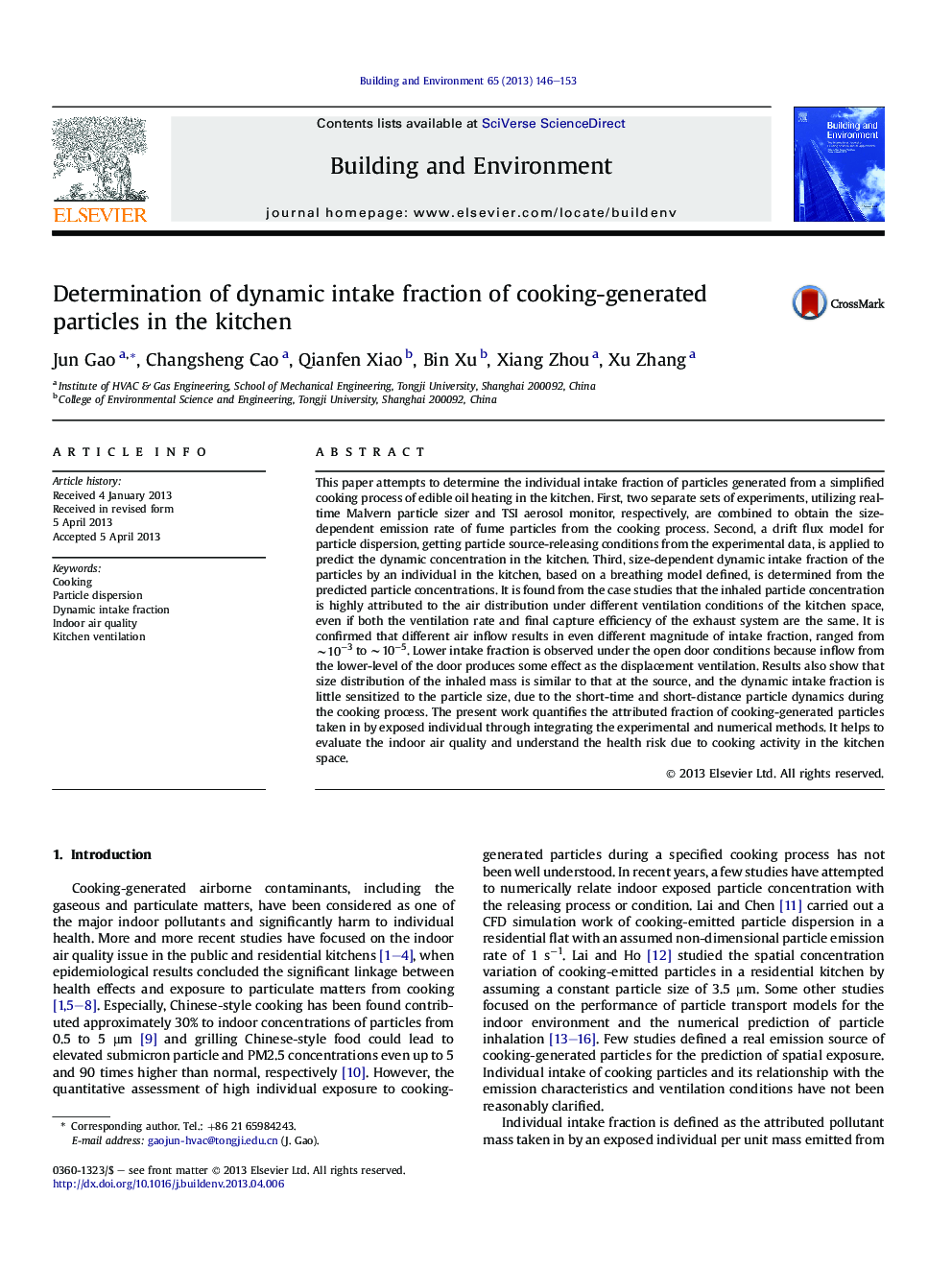| Article ID | Journal | Published Year | Pages | File Type |
|---|---|---|---|---|
| 6701017 | Building and Environment | 2013 | 8 Pages |
Abstract
This paper attempts to determine the individual intake fraction of particles generated from a simplified cooking process of edible oil heating in the kitchen. First, two separate sets of experiments, utilizing real-time Malvern particle sizer and TSI aerosol monitor, respectively, are combined to obtain the size-dependent emission rate of fume particles from the cooking process. Second, a drift flux model for particle dispersion, getting particle source-releasing conditions from the experimental data, is applied to predict the dynamic concentration in the kitchen. Third, size-dependent dynamic intake fraction of the particles by an individual in the kitchen, based on a breathing model defined, is determined from the predicted particle concentrations. It is found from the case studies that the inhaled particle concentration is highly attributed to the air distribution under different ventilation conditions of the kitchen space, even if both the ventilation rate and final capture efficiency of the exhaust system are the same. It is confirmed that different air inflow results in even different magnitude of intake fraction, ranged from â¼10â3 to â¼10â5. Lower intake fraction is observed under the open door conditions because inflow from the lower-level of the door produces some effect as the displacement ventilation. Results also show that size distribution of the inhaled mass is similar to that at the source, and the dynamic intake fraction is little sensitized to the particle size, due to the short-time and short-distance particle dynamics during the cooking process. The present work quantifies the attributed fraction of cooking-generated particles taken in by exposed individual through integrating the experimental and numerical methods. It helps to evaluate the indoor air quality and understand the health risk due to cooking activity in the kitchen space.
Related Topics
Physical Sciences and Engineering
Energy
Renewable Energy, Sustainability and the Environment
Authors
Jun Gao, Changsheng Cao, Qianfen Xiao, Bin Xu, Xiang Zhou, Xu Zhang,
